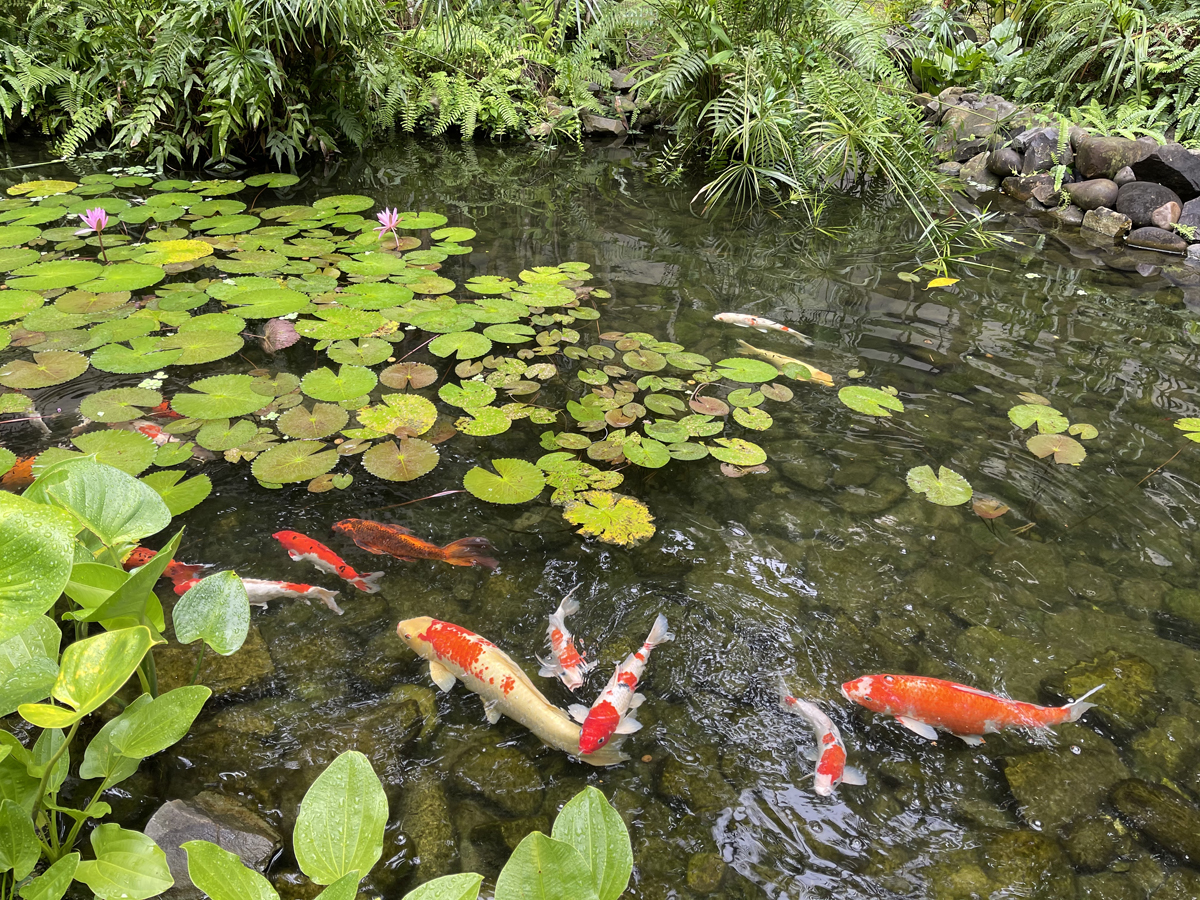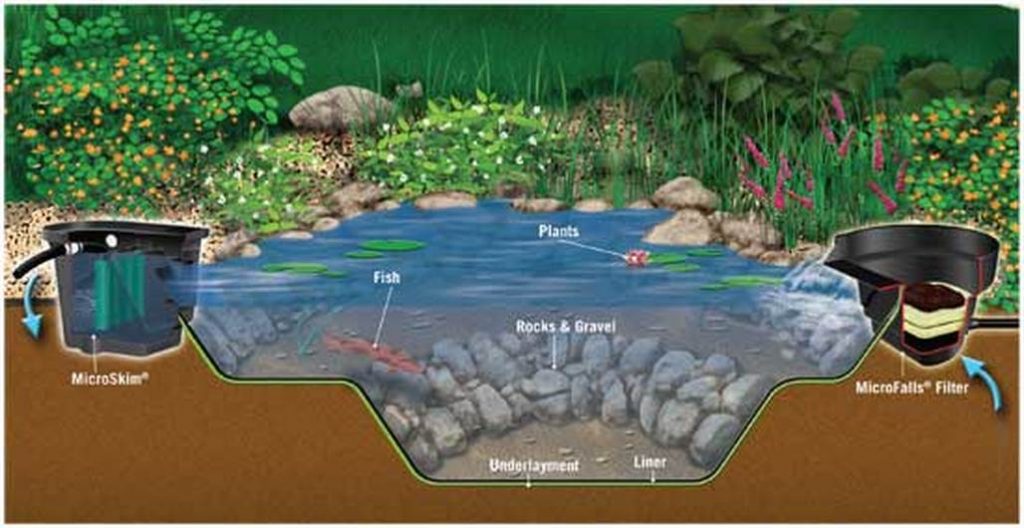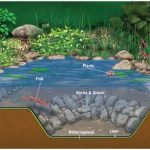A koi pond should be at least 3 feet deep to provide a suitable environment for the fish. Koi fish require a certain depth to swim and thrive.
A koi pond is a beautiful addition to any garden or outdoor space. These colorful fish are known for their graceful movements and can bring a sense of tranquility to your surroundings. However, creating a koi pond requires careful planning and consideration.
One important factor to consider is the depth of the pond. The depth of a koi pond is crucial for the well-being of the fish. It not only affects their ability to swim and move around freely but also plays a role in maintaining their overall health. We will discuss the ideal depth for a koi pond and why it is important. So, let’s dive in!
Benefits Of A Koi Pond
Adding a koi pond to your outdoor space can bring a wealth of benefits, from creating a tranquil and serene atmosphere to enhancing the overall aesthetic appeal of your property. Here are several key advantages of incorporating a koi pond into your landscape:
Creating A Relaxing Atmosphere
The presence of a koi pond in your garden can significantly contribute to creating a calming and peaceful environment. The gentle movement of the water and the soothing presence of the koi fish can help to reduce stress and anxiety, providing a serene space for relaxation and contemplation.
Enhancing Aesthetic Appeal
A well-designed koi pond can serve as a stunning focal point, adding aesthetic beauty to your outdoor space. The shimmering water and the vibrant colors of the koi fish can elevate the visual appeal of your landscape, creating a captivating feature that enhances the overall ambiance of your garden.
The Importance Of Pond Depth
Ensuring the proper depth of a koi pond is essential for the health and well-being of your koi fish. The depth of the pond plays a crucial role in maintaining water quality, regulating temperature, and providing a suitable environment for the fish to thrive.
Impact On Koi Health
The depth of the pond directly impacts the overall health of your koi fish.
Regulation Of Water Temperature
Proper pond depth helps regulate the water temperature, providing a stable environment for koi fish.
Factors Affecting Optimal Depth
The optimal depth of a koi pond is influenced by several factors such as the climate, the number of fish, and the desired water temperature. The depth should provide enough space for koi to swim comfortably and protect them from extreme temperatures.
When constructing a koi pond, determining the ideal depth is crucial for the health and well-being of your fish. There are several factors that influence the optimal depth of a koi pond, including climate and weather conditions, as well as the size and behavior of the koi fish.
Climate And Weather Conditions
The climate and weather conditions of your region play a significant role in determining the optimal depth of your koi pond. In areas with harsh winters and freezing temperatures, a deeper pond is necessary to provide the fish with a safe and stable environment. The depth helps prevent the water from freezing completely, allowing the koi to survive during the winter months.
On the other hand, in regions with hot summers, a deeper pond can provide much-needed relief from the heat. The lower levels of water will remain cooler, creating a comfortable habitat for the koi to thrive. Additionally, a deeper pond helps maintain stable water temperatures, reducing the risk of stress or illness in the fish.
Koi Fish Size And Behavior
The size and behavior of your koi fish are crucial considerations when determining the depth of your pond. Koi fish can grow quite large, ranging from a few inches to over three feet in length. As they grow, they require deeper water to allow for proper swimming, especially for their long and graceful tails. A shallow pond may hinder their movement and potentially cause injuries.
Furthermore, the behavior of koi fish also plays a role in determining the depth of the pond. Koi are known to be active swimmers and may exhibit playful behavior such as jumping or splashing. A deeper pond provides ample space for these activities, minimizing the risk of injury or stress on the fish.
Overall, when considering the optimal depth for your koi pond, it is essential to take into account the climate and weather conditions of your region, as well as the size and behavior of your koi fish. By creating a pond that caters to these factors, you can ensure a healthy and thriving environment for your beloved koi.
Credit: aquanooga.com
Recommended Pond Depths
When it comes to creating a koi pond, determining the right depth is crucial for the health and well-being of your fish. Below, we outline the recommended pond depths for optimal koi survival and behavior.
Minimum Depth For Koi Survival
For koi to thrive and survive, the pond should have a minimum depth of 3 feet to 4 feet to provide ample space for the fish to swim and grow.
Ideal Depths For Koi Health And Behavior
- Koi exhibit healthier behavior in ponds with depths ranging from 4 feet to 6 feet as it allows them to explore and exhibit natural behaviors.
- Deeper ponds also help koi better regulate their body temperature during extreme weather conditions.
Designing The Perfect Koi Pond
When designing the perfect koi pond, it’s essential to consider the depth carefully. Ideally, a koi pond should be at least 3 feet deep to provide enough space for the koi to thrive. Deeper ponds also help to maintain more stable water temperatures and provide better protection for the fish.
Considering The Surrounding Environment
When designing a koi pond, it’s crucial to consider the surrounding environment to ensure the optimal habitat for these beautiful fish. The depth of the pond is a key factor in creating a suitable ecosystem for koi.
- The ideal depth of a koi pond should be at least 3 feet to provide ample space for the koi to swim and thrive.
- A deeper pond also helps maintain a more stable water temperature throughout the year, which is essential for the health of the koi.
- In colder climates, a deeper pond can prevent the water from freezing all the way to the bottom, ensuring the survival of the koi during the winter months.
Implementing Safety Measures
Ensuring the safety of both the koi and the surrounding environment should be a top priority when designing a koi pond.
- Installing a durable and secure pond liner is essential to prevent leaks and protect the koi from predators.
- Incorporating a shallow area in the pond can provide a safe haven for the koi to retreat to in case of extreme weather conditions or predators.
- Adding netting or other protective measures can help safeguard the koi from birds and other potential threats.

Credit: thebackyardpond.com
Construction And Maintenance
When it comes to constructing and maintaining a koi pond, one of the key considerations is the depth of the pond. The depth of a koi pond plays a crucial role in the health and well-being of your koi fish. In this section, we will explore the different aspects of constructing and maintaining the ideal depth for a koi pond.
Excavation And Shaping
To achieve the appropriate depth for your koi pond, careful excavation and shaping are necessary. Excavation involves digging the pond to the desired depth, while shaping ensures a smooth and aesthetically pleasing design. The excavated soil can be used to create elevated areas in the pond for additional visual interest.
During the excavation process, it’s important to consider the natural landscape and the needs of your koi. A depth of at least 3 feet is recommended to provide sufficient space for the koi to swim freely and to allow for proper filtration and aeration. By considering the size and dimensions of your backyard or garden area, you can determine the suitable size for your koi pond.
Monitoring And Managing Water Depth
Once the pond is constructed, monitoring and managing the water depth becomes crucial for the health of your koi fish. Regular monitoring allows you to identify any fluctuations in the water level and take necessary action to prevent any issues. This is especially important during heavy rainfall or dry spells, as these conditions can affect the water depth.
One way to ensure consistent water depth is by using a water level gauge or sensor. This device helps you keep track of the water level, allowing you to make adjustments if needed. Additionally, installing a well-designed filtration system can help maintain the water level and quality by removing debris and keeping the water clean.
It’s important to note that maintaining a stable water level in your koi pond is essential for the overall health and happiness of your fish. Proper water depth helps in regulating temperature, oxygen levels, and waste removal, providing an optimal living environment for your koi.
Common Mistakes And Pitfalls
When constructing a koi pond, it’s vital to avoid common mistakes and pitfalls that may arise. Let’s delve into some Shallow Pond Dangers and Overlooking Koi Behavior Patterns.
Shallow Pond Dangers
Shallow ponds can negatively impact the health of your koi fish. These dangers include insufficient space for fish to swim freely, increased vulnerability to predators, and susceptibility to temperature fluctuations.
Overlooking Koi Behavior Patterns
Failure to consider koi behavior patterns can lead to stress and discomfort for your fish. Overcrowding, inadequate hiding spots, and lack of depth for proper swimming activities can result in behavioral issues and health problems.
Ensure your koi pond is deep enough to accommodate the natural behavior of your fish. By avoiding these pitfalls, you can create a harmonious environment for your koi to thrive.

Credit: cartersgarden.wordpress.com
Final Considerations
When determining how deep your koi pond should be, several final considerations can play a crucial role in ensuring a healthy and thriving aquatic environment for your beloved fish.
Choosing The Right Depth For Your Koi Pond
A depth of at least three to four feet is recommended for a koi pond, providing ample space for the fish to swim and engage in their natural behaviors.
This depth also helps maintain a stable water temperature throughout the year, essential for the health and well-being of your koi.
Continuous Assessment And Adaptation
Regularly monitoring the water quality, temperature, and the behavior of your koi is vital in ensuring they thrive in their habitat.
Be prepared to adjust the depth of your pond if needed to accommodate the changing needs of your fish.
Conclusion
The depth of a koi pond is crucial for the health and well-being of the fish. By understanding the specific needs of koi and considering factors such as climate and pond size, you can determine the appropriate depth for your pond.
Ultimately, a well-designed koi pond with the right depth will create a thriving and beautiful environment for your fish.





